23 Jan Workplace Safety
Ensuring workplace safety isn’t just a regulatory requirement; it’s an investment in your organization’s most valuable asset – your employees. Safety plays a critical role in enhancing productivity, fostering a positive workplace culture, and ultimately protecting your workforce. Identifying workplace safety risks will help in preventing accidents and claims.
What is Workplace Safety?
Creating a safe work environment is a commitment to the well-being of your employees and the success of your business. Here’s why workplace safety is an important component of a business:
- Employee Well-Being: A safe workplace nurtures a positive culture and demonstrates a clear commitment to your staff’s safety and welfare. Prioritizing their well-being boosts morale and reduces absenteeism.
- Financial Impact and Claim Prevention: Effective safety and risk control programs prevent accidents and claims. By reducing injuries, illnesses, and associated costs such as workers’ compensation payments and medical expenses, you contribute to increased productivity and financial stability.
- Recruitment and Competition: A strong safety record enhances your organization’s attractiveness to potential recruits and sets you apart in the market. A commitment to safety shows dedication to your employees and the work they do.
Identifying Risks
Understanding and identifying workplace safety risks is the first step toward building a safety and risk control program. Preventing accidents and claims is a central focus of workplace safety. By proactively identifying and addressing risks, you create a safer environment that significantly reduces the likelihood of incidents occurring. This not only protects your employees but also safeguards your organization from potential financial repercussions associated with claims.
Improving Workplace Safety
- Employee Training Programs: Conduct regular safety training programs to educate employees about potential risks, emergency procedures, and safety protocols.
- Safety Monitoring: Use technology to enhance safety monitoring. Implement safety strategies that will provide real-time data on potential risks.
- Regular Safety Inspections: Consider holding regular safety inspections to identify potential hazards. Engage employees in the inspection process in order to be properly informed on their firsthand day-to-day experiences and operations.
- Report Incidents: Inadequate warnings or instructions can lead to liability claims. Product liability insurance can provide coverage in such cases, emphasizing the importance of clear communication to consumers.
- Continuous Improvement: Regularly review and update safety protocols based on incident reports, industry best practices, and technological advancements. Continuous improvement is key to having a successful safety program.
Prioritizing workplace safety in order to prevent workplace injuries and illnesses, improve compliance with laws and regulations, reduce costs, especially those associated with workers’ compensation, engage workers, and increase productivity and overall business operations.
If the benefits of safety in the workplace interest you and your business, you may want to assess where your risks lie.
Our Intelligent Quotient for Risk Management is a non-evasive, less than 5-minute, assessment that you can complete to see where your business is regarding how effective it handles the risk of workplace incidents. Upon completing the assessment, you will receive a free evaluation score.
We are here for you for all your insurance needs.
To discuss your options, contact one of our talented Risk Advisors today!


No Comments